Stewardship and construction of the built environment require knowledge and skill. While the CLT can play a role in this by offering job training, the use of open source design can become an essential tool for sharing knowledge. Outside Development imagines providing the community with “design kits” for hydroponic systems and rammed earth structures. These would be easily replicable and made available to all members of the CLT, becoming ‘custom standards’ within the community. Here, the benefits of efficiency and cost reduction that come with standardization would go to the community, as these custom standards would lower the threshold of cost and make the training workshops easier to organize. By creating custom standards for local conditions and for community use, this project upends the binary between cheap industrially produced goods and expensive local production, helping to transition low income communities away from full dependence on industrial supply chains.
Eventually, as community members become more and more knowledgeable in the planting and construction techniques, the standards would fall out of use, having served simply as a starting point for the building of vernacular knowledge after centuries of its erasure under global industrialization.
Below is an example elevation of a fence design that doubles as a hydroponic farming system:

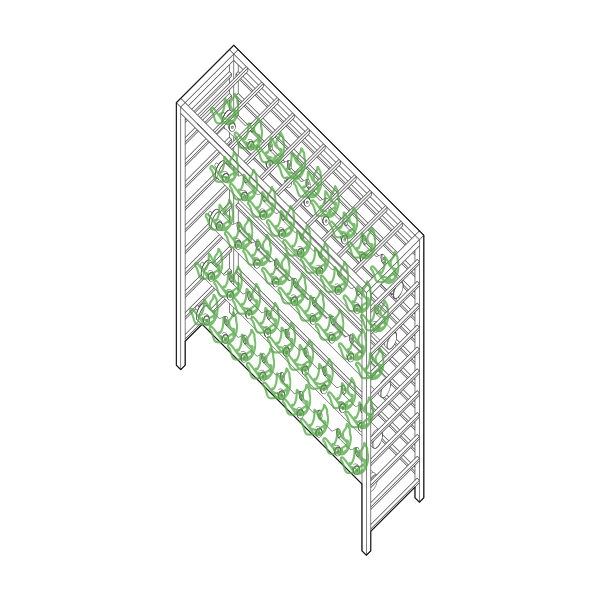
The axonometric above shows the fence fully utilized as a hydroponic vertical farm to grow vegetables.
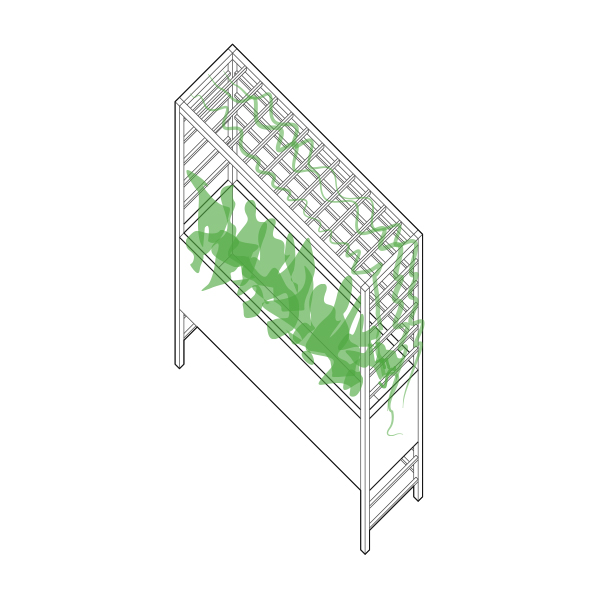
When appropriate, the fence can support both a trellis and a planter if a member wishes to grow and maintain different types of plants.
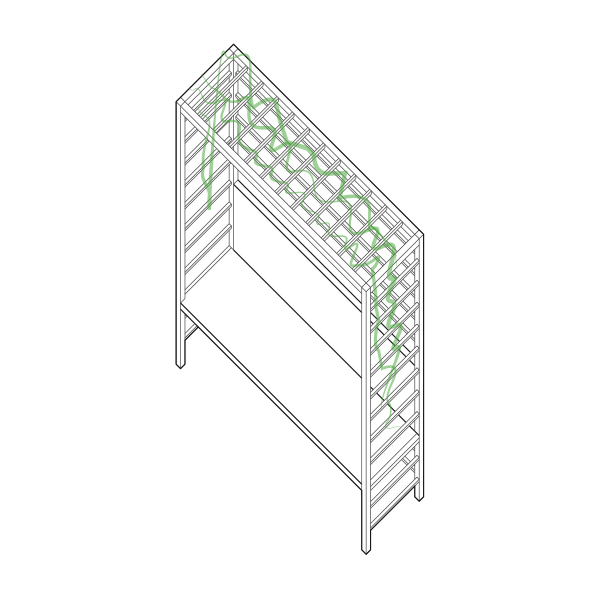
The fence can become a bench for seating under the shade of a planted trellis.
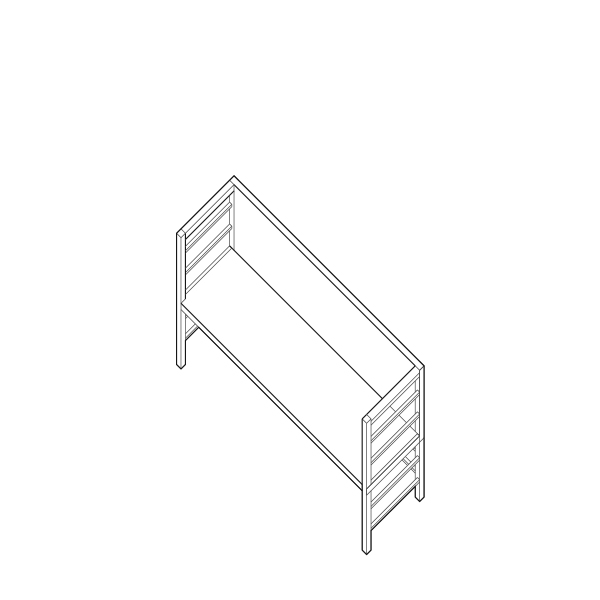
Or, the system can simply be a bench turned inward toward the private residence or outward toward the street for pedestrian use.
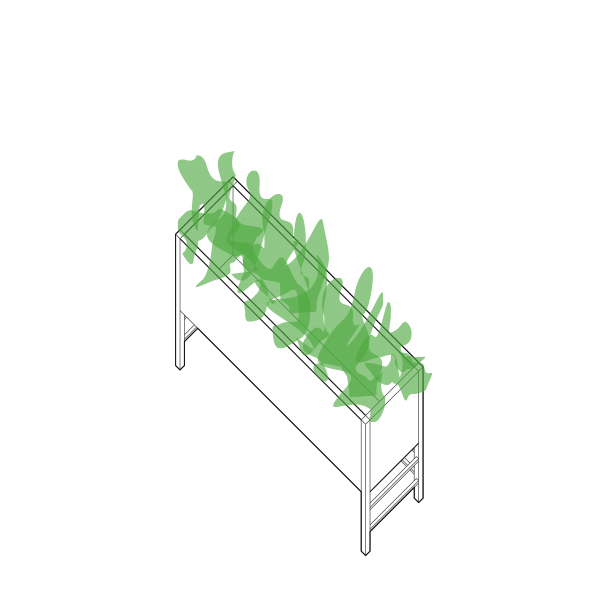
The fence can be a waist-high planter which nevertheless serves its purpose as a boundary line.
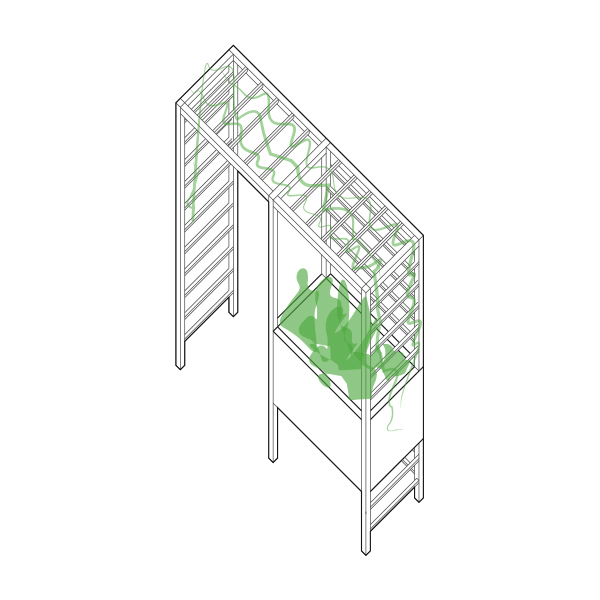
Here, the modular system is combined to function as a trellis, a planter and an opening for an entrance gate.